We invite you to explore India - the Land with infinite beauty ! Whether you soar high into Himalayas or peer under the ruins of the Ancient monuments dotting the landscape of India, you will cherish the experience long after your visit ! This India Travel Guide on Manapad Churches is free from any commercial interest! This site is dedicated to promote India - the vast subcontinent, its glorious past, magnificent landscape and its infinite variety.

Manapad Churches
Tuticorin - the region's history extends far back, with the ancient town of Korkai serving as a prominent trade and pearl-diving hub. This established the area's importance in maritime trade from very early times. A defining feature of Tuticorin throughout its history has been its pearl fisheries. This industry was a major economic driver and a key reason for the city's prominence.
Manapad is a coastal village in the Thoothukudi (Tuticorin) district of Tamil Nadu, India, renowned for its stunning beaches, Portuguese influence and medieval European architecture, and most importantly, its significant Christian pilgrimage sites.
The churches there hold deep religious and historical importance. This coastal landscape is dotted with many Churches-many of them built during the late 1500 onwards. What is even more significant is some of these churches have very important Holy relics including a sliver of the True Cross.
Even more shocking is the legend associated with one of these Churches- Our Lady of Sand or what is called here- Manal Madha. A devotee of Mother Mary was wrongly accused of a crime and she invoked the curse upon the village when a sand storm swept through the land and buried the village.
Here's a detailed look at the key churches in Manapad:
1. Holy Cross Church (Sacred Heart Church): This is the most prominent and significant church in Manapad, and the heart of its religious fame.
History: According to the Jesuit mission records from 1521, Manapad was home to a stunning church constructed from stone, consecrated to Our Lady of Assumption. However, in 1695, Dutch mercenaries seized control of this sacred edifice and repurposed it as their armory. Over time, the structure suffered decay and neglect. Within its walls lay the tomb of Fr.Constantine Joseph Beschi, a renowned Italian missionary and Tamil scholar known as Veeramamunivar (The Bold Ascetic) and Dairiya Nathar (Fearless Leader). He came to south coast of India in 1710. He wrote many erudite books in Tamil-Thembavani , Treatise on Tamil Grammar, amongst others. He was instrumental in building many Churches-Poondi Madha Church, Perinayagi Shrine in Konakuppam, Adaikala madha Shrine in Elakurichi. He died in 1746 and interned in Manapad. Tragically, both the church and Beschi's tomb were irreparably damaged during this tumultuous period. The stone remnants were eventually reused in the construction of a new church, dedicated to the Holy Ghost in 1851. It's built on the site where St. Francis Xavier stayed and preached during his missionary work in India.
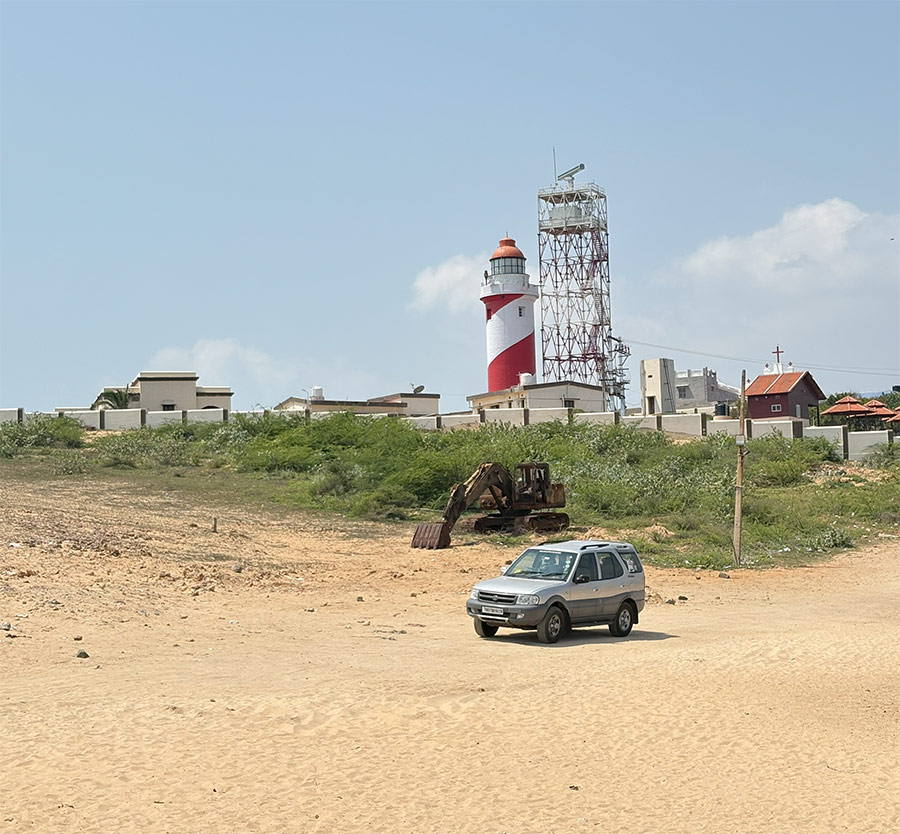
Relic: The most important feature is the fragment of the True Cross of Jesus Christ, brought by Portuguese missionaries. This relic is enshrined within the church. And in the same wooden box, a bone sliver of St.Francis Xavier is kept. The mere presence of these precious relics itself should be a first choice for a pilgrimage. If properly articulated in Rome, the Holy Spirit Church may be raised to the level of a minor Basilica.
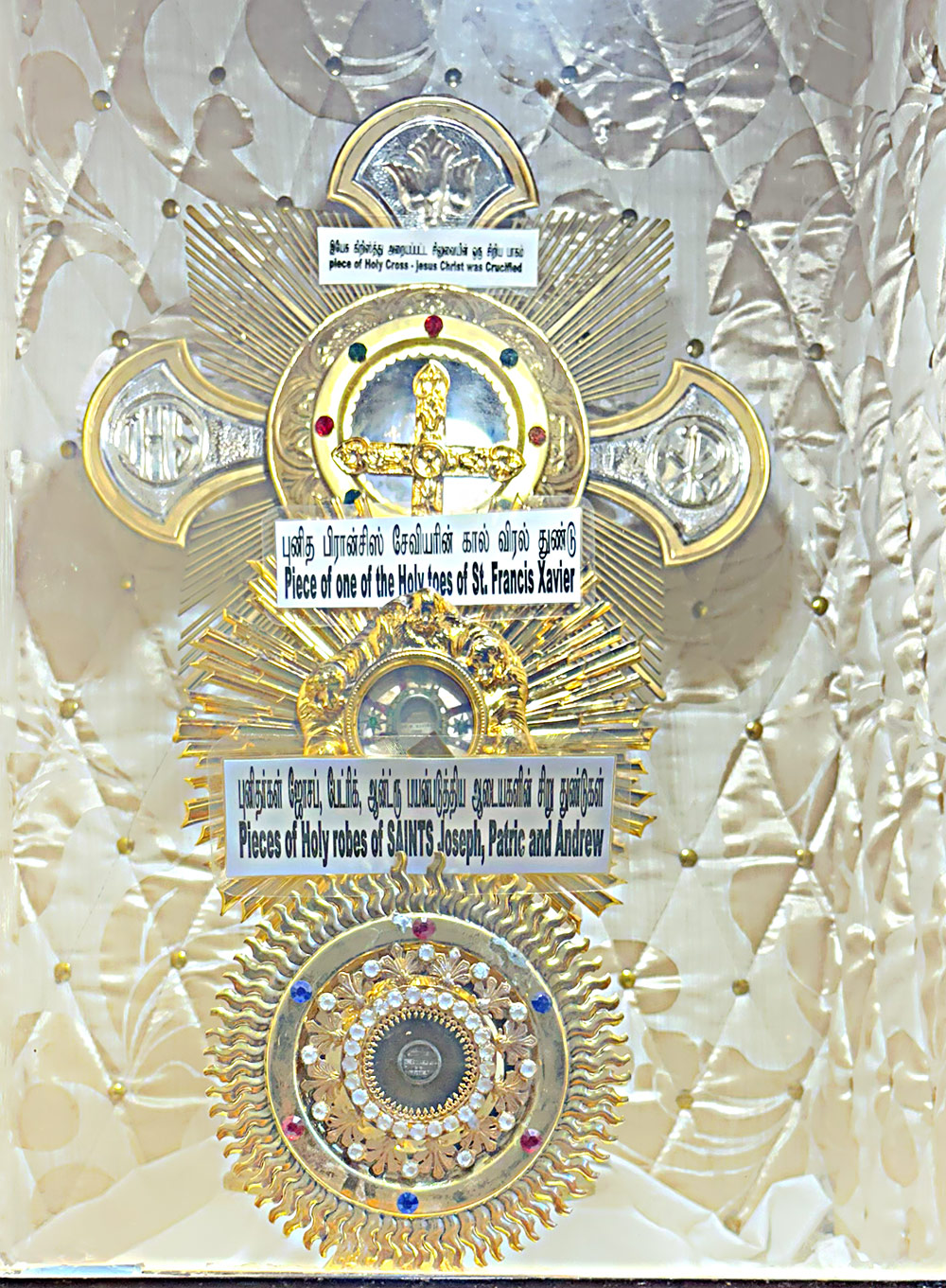
Architecture: Medieval churches, such as these were built using stone, wood, and mortar -without modern concrete or steel beams. Their construction relied on clever engineering, skilled craftsmanship and basic tools.
Gothic Arches: Instead of relying on steel, they used pointed arches, which distributed weight downwards and reduced lateral pressure.
Flying Buttresses: External supports helped transfer weight away from the walls, allowing for large stained glass windows.
Ribbed Vaulting: Intersecting stone ribs strengthened ceilings, replacing the need for heavy solid stone slabs. The exquisite statues of Our Lady were sourced from Europe. Even the Stations of the Cross wood carvings have legends written in French. The decorative letters are in Latin. These Churches have withstood the ravages of time, hostile forces and the constant battering of the wind due to their proximity to the sea shore in all these hundreds of years - which itself is a miracle.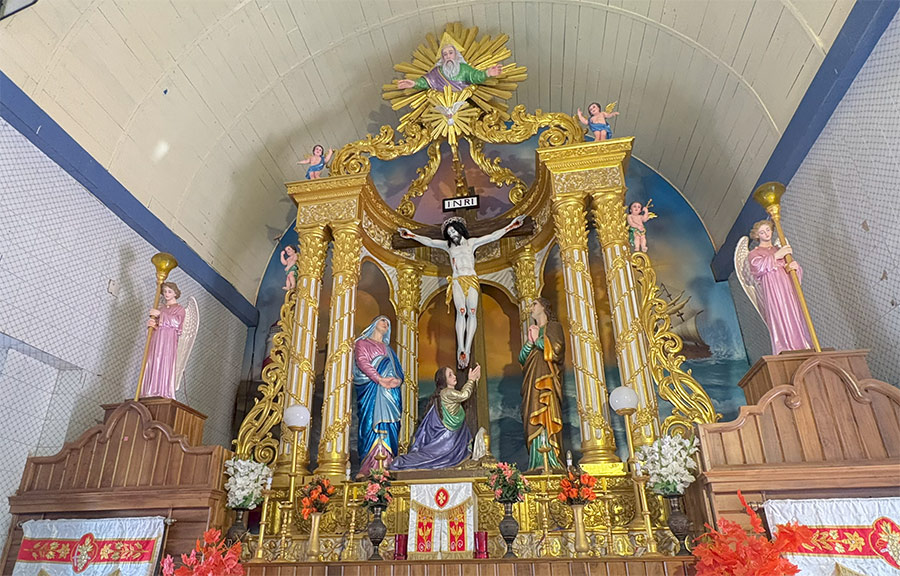
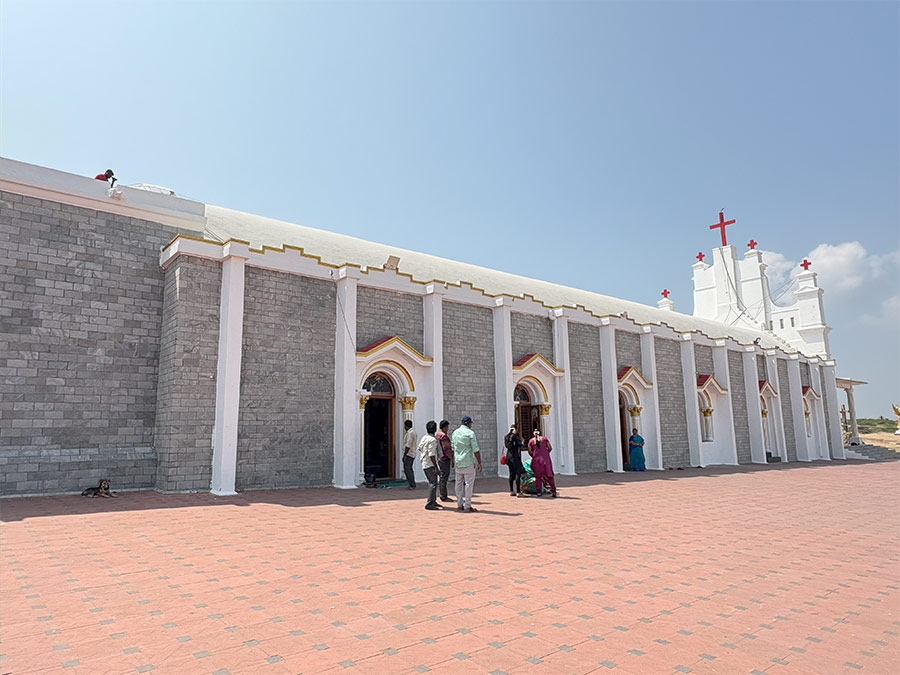
The church showcases a blend of Portuguese and Indian architectural styles. It has a simple yet elegant façade, a barrel-vaulted roof, and a central nave. The altar is beautifully decorated, and the church interior exudes a serene atmosphere.
Significance: The presence of the relic of the True Cross makes the Holy Cross Church a major pilgrimage destination for Christians, particularly during the annual feast. It's believed to hold miraculous powers. The church's serene location by the sea adds to its spiritual ambiance.
Feast: The annual feast of the Holy Cross is celebrated in September (usually around September 14th). It attracts thousands of pilgrims from across India and abroad. During the feast, special prayers, processions, and religious services are held.
2. St. James Church:
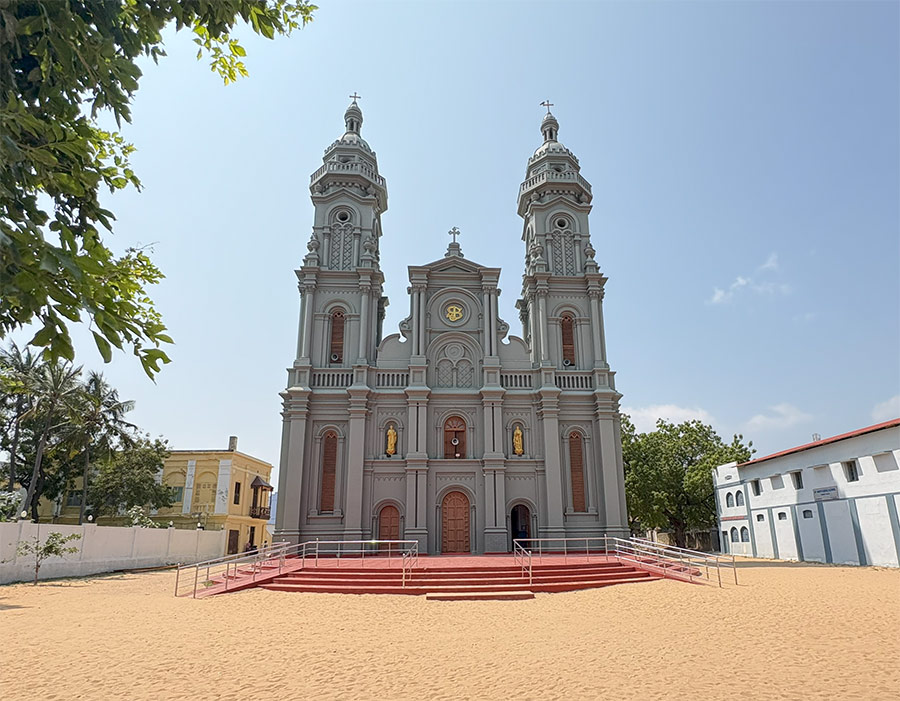
History: This is a smaller, more humble church in Manapad, dedicated to St. James (Santiago). While the exact construction date is not as prominently documented as the Holy Cross Church, it is also a part of the historical Christian heritage of Manapad.
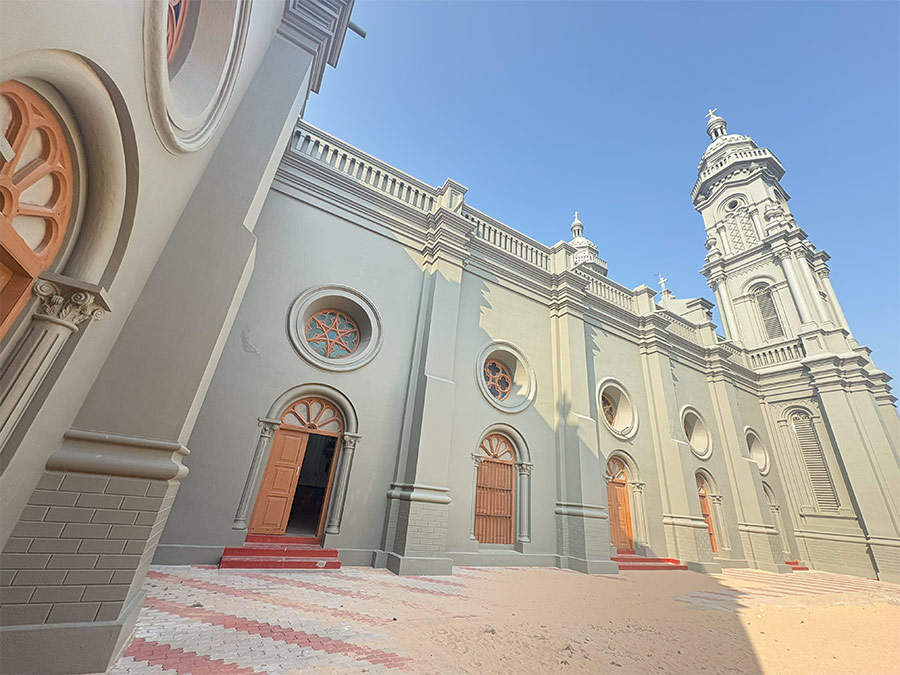
Significance : While not as grand as the Holy Cross Church, St. James Church serves as an important place of worship for the local community. It contributes to the overall religious atmosphere of Manapad.
3 . The Holy Cross Church
In the year 1540 AD, a Portuguese ship was caught in a severe storm in the sea of Bay of Bengal. Finally the ship landed in Manapad and as per the promise of the Captain of the ship, he fixed the mast of the ship and a Cross on the hill. When St.Francis Xavier came in 1542, he built a chapel housing the Cross.
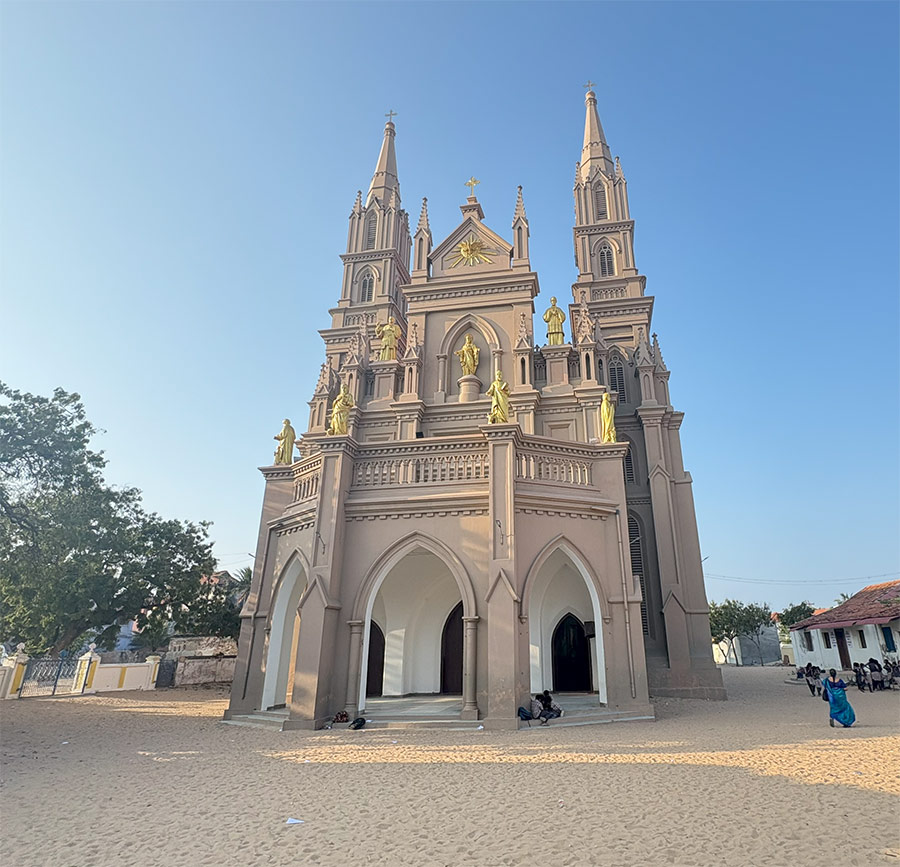
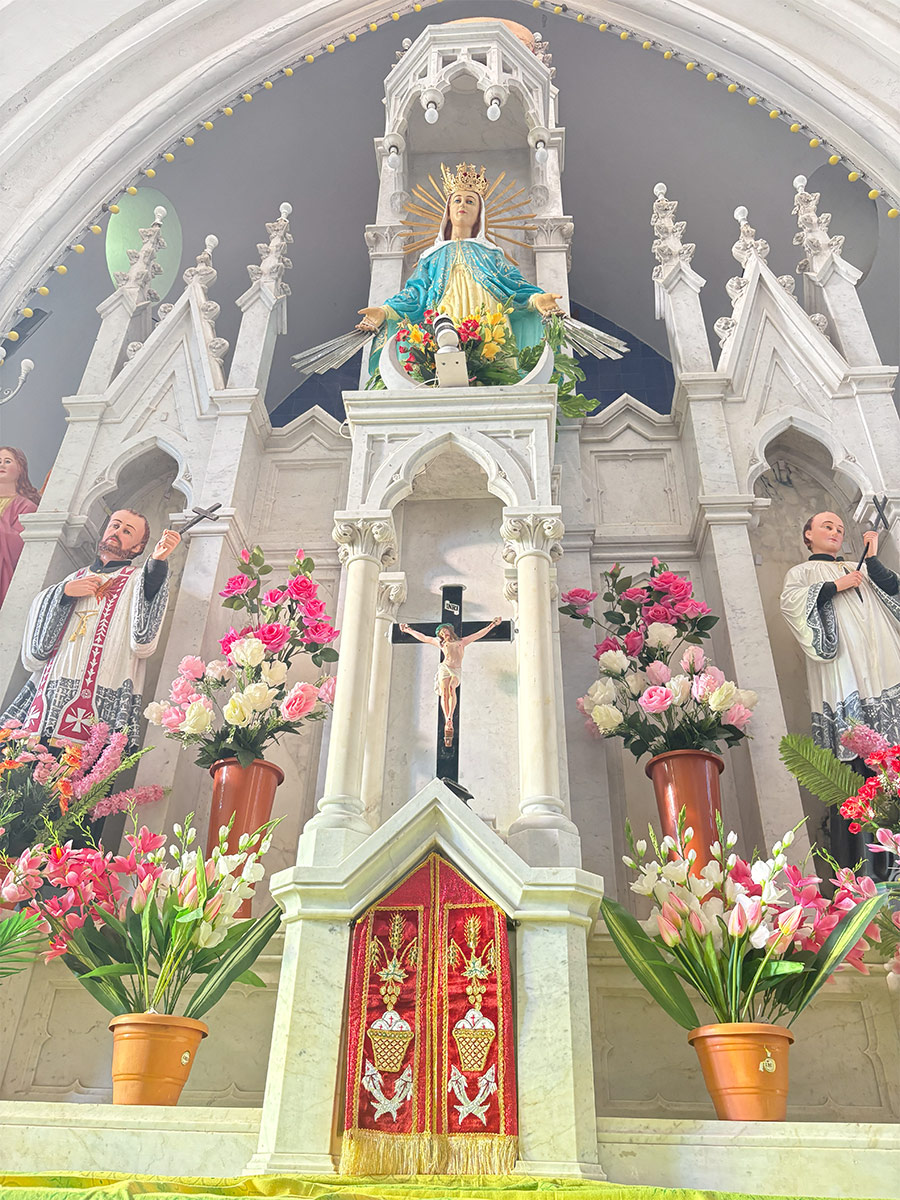
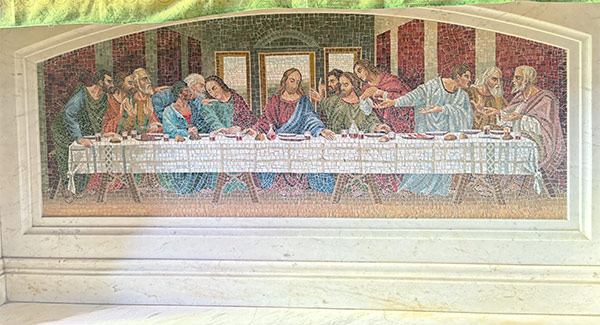
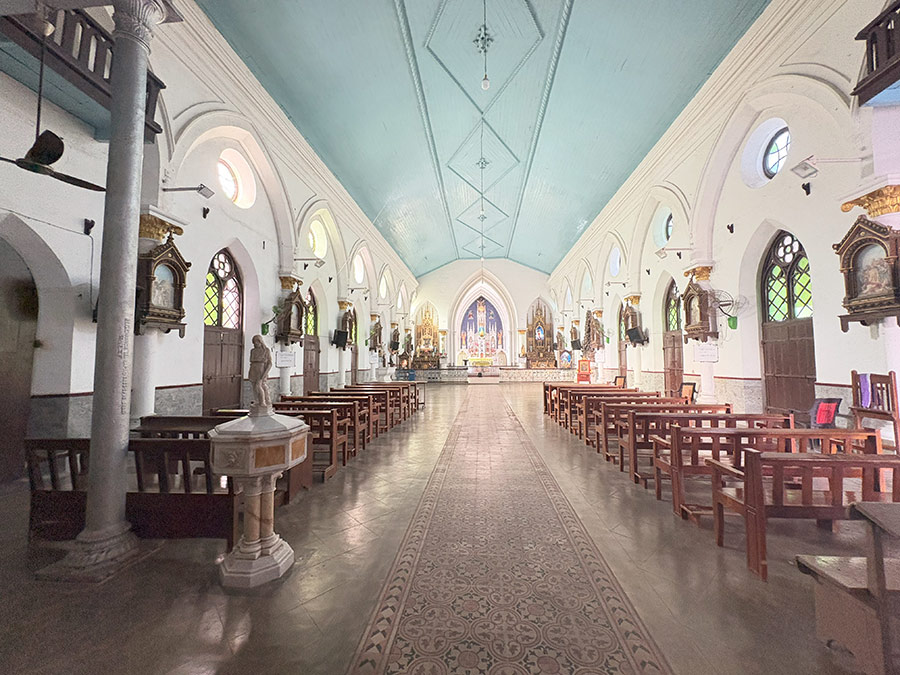
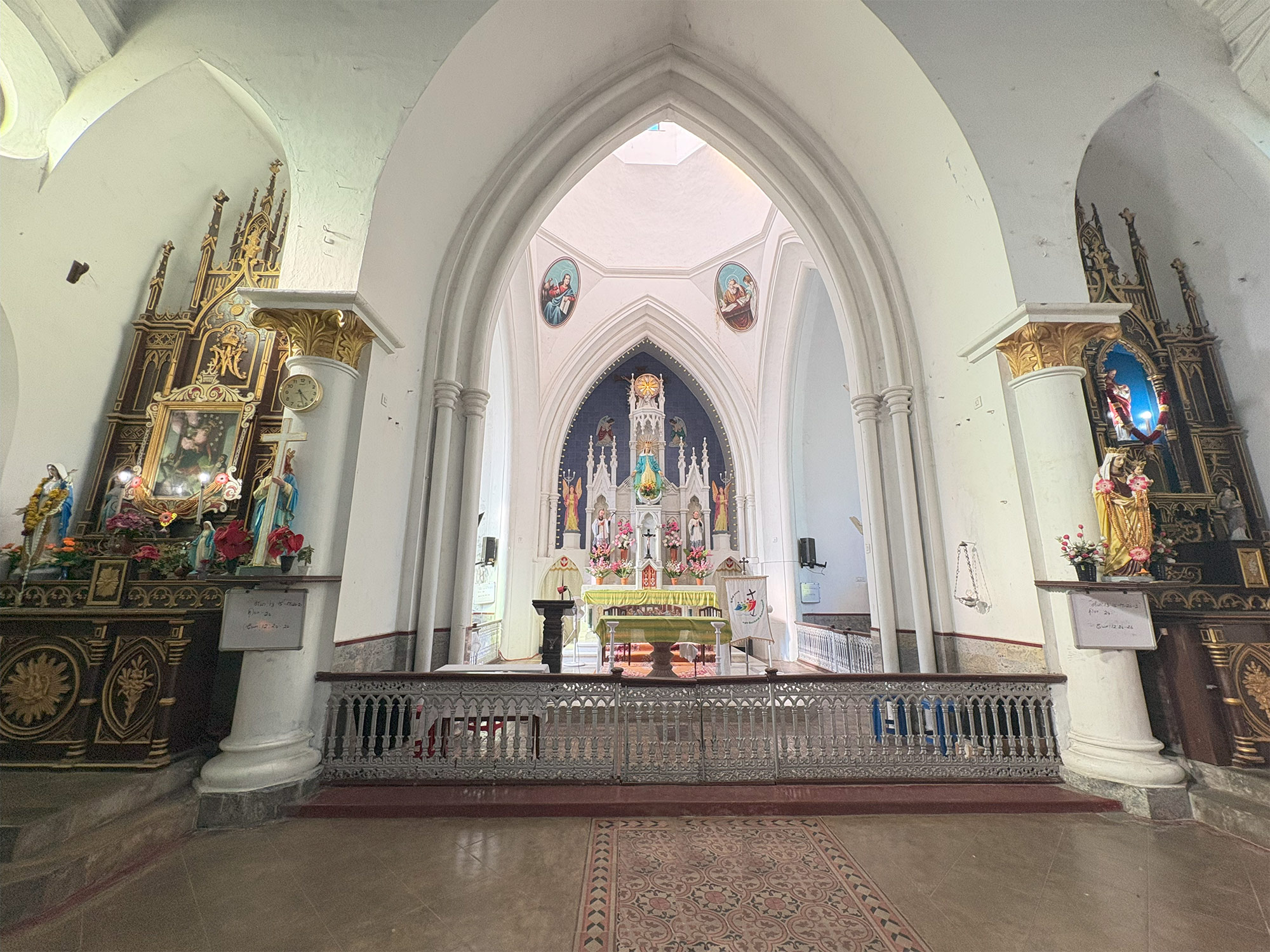
In the year 1581, a new church-called as the Holy Cross Church was constructed over the small chapel . In 1583 AD, Pope Gregory XIII sent a sliver of the true Cross to Manapad. This Holy Relic was later shifted to the Holy Spirit Church as we noted earlier.
St. Francis Xavier started teaching the message of Christ in the coastal region. He used a bell to signal the people thus earning the nick name-‘Maniyadi Samiar’ - Bell ringing Hermit. He performed many miracles in the region and was successful in converting most of the fishermen-known as Baradars here. It didn't’t go well with the local king who ordered his capture and beheading later. The soldiers arrived at the known location of the Saint and were shocked to find extremely tall men, nearly 9 feet tall, in white cloaks standing near the Saint. They ran away thinking that the White Saint had brought heavily armed foreign soldiers from aboard. In reality there was no soldier to defend the Saint. What they saw were Angels who came to defend the Saint.
The Saint stayed in a cave close to the sea shore. He dug up a rock inside the cave and miraculously clean drinking water gushed forth from the well which still exists today. People come here to drink the water which has miraculous properties. You will be surprised to taste the water and see that it is not saline despite situated so close to the sea. Saint Francis Xavier and the Portuguese have left an indelible mark in this region.
Manapad holds immense significance because St. Francis Xavier, one of the founding members of the Society of Jesus (Jesuits), frequently visited and stayed in Manapad. He performed miracles here, further enhancing the sanctity of the place. The rock where he prayed is venerated.
4. Our Lady of Sand Church - Adisaya Manal Madha Aalayam
Somewhere near 70 AD, St.Thomas ( or the Doubting Thomas) a disciple of Jesus came to this part. At that time a small kingdom known as Manavira Nadu was ruled by a king whose wife and daughter suffered affliction from evil spirits. St.Thomas drove away the evil spirits and baptized the King and his entourage. The surrounding village-Kanakan Kidiyirupu ( the dwelling of the ministers) adopted Christianity seeing their King.
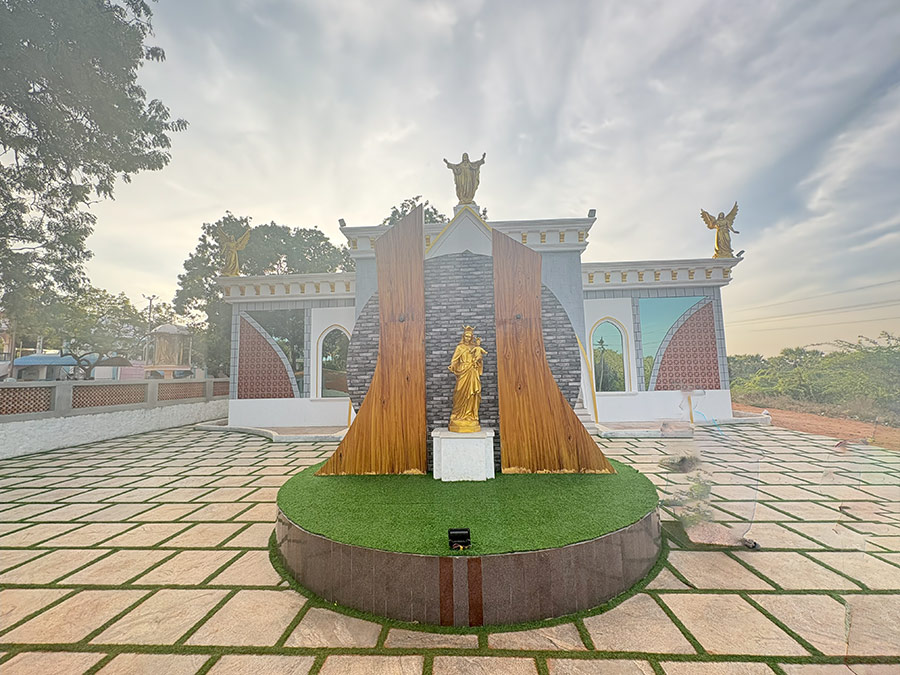
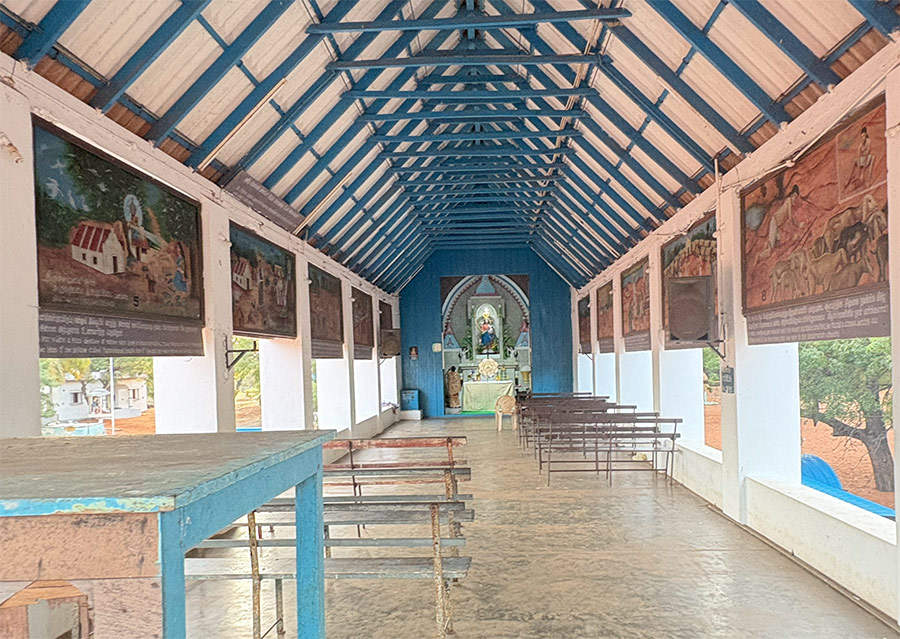
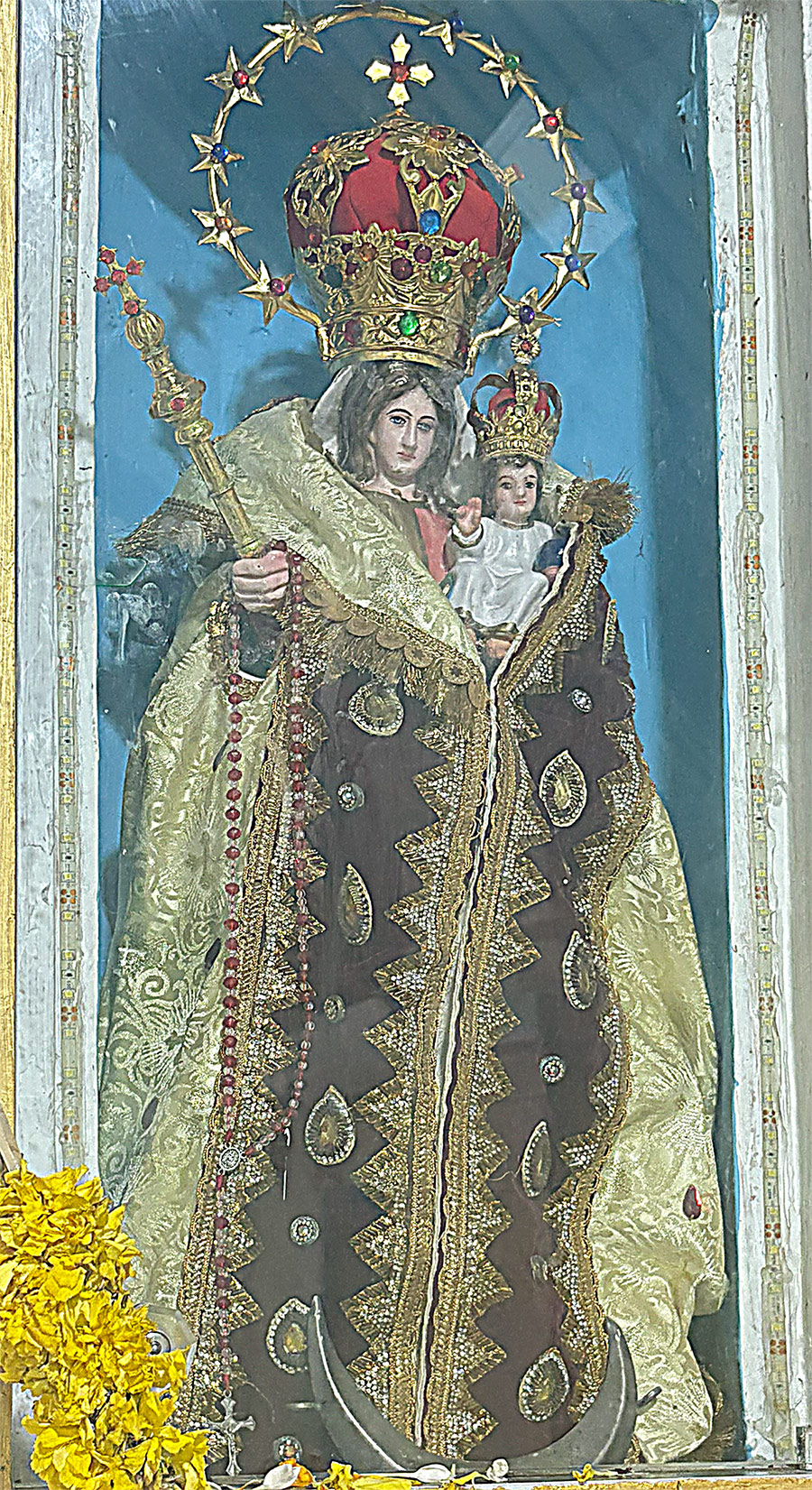
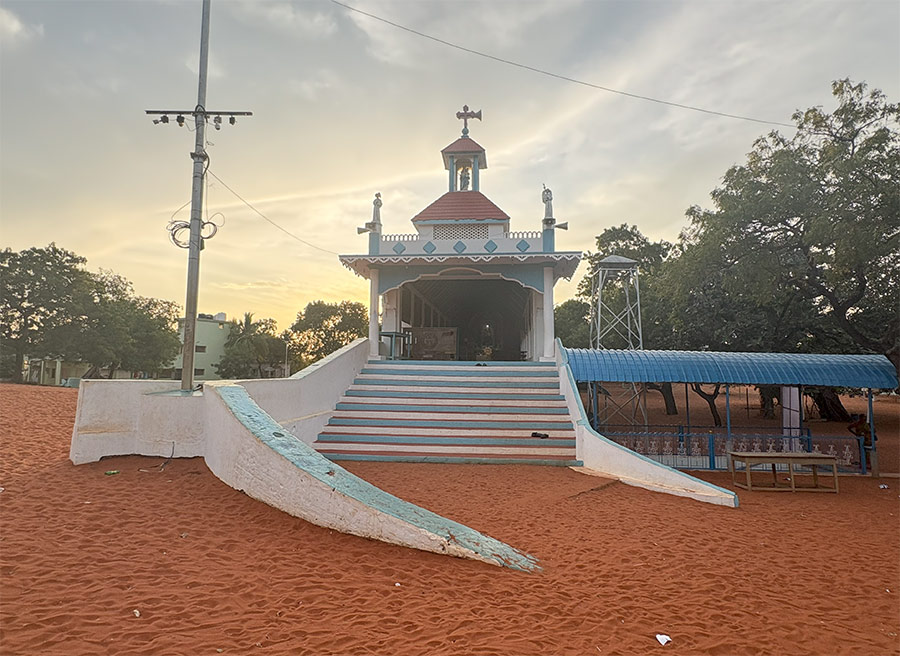
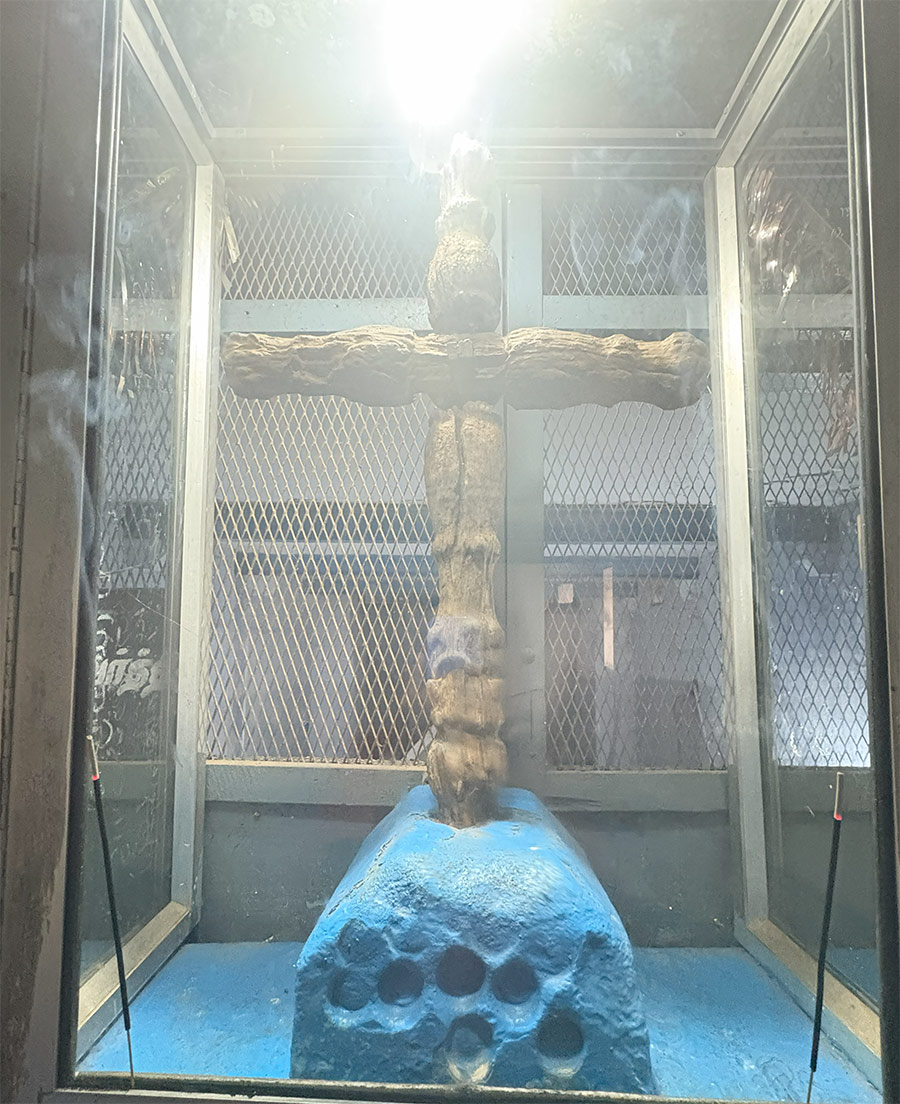
The Portuguese priests periodically visited this part and helped the locals from the marauding Moslem invaders. In the year 1339, our Lady appeared in a dream to a pious Christian and ordered a church to be built in Her honor. And the church was finally constructed and an emissary of the Pope, Most Rev. Mario Jiovanni came with a Statue of Our Lady and installed it in the Church. In 1548, Saint Xavier reanimated a dead villager from this village as part of his many documented miracles.
In 1598, a widow by the name of Jesu Marial, a devotee of Our Lady eked out a living by selling fish brought by Heron and Paddy birds. These birds (naarai and Kokku) brought fish sourced from the sea to the widow and she lived with the help of Our Lady. One day some of the villagers suspected that this woman was earning money by adultery and brought her before the King Duravi pandiyan who like the King Neduncheiyan in the case of Kannagi of Madurai, did not order a proper enquiry and instead chose to mete out capital punishment to the widow. So they buried her alive.
Like Kannagi, Jesu Marial cursed the land saying that the same fate awaited her tormentors. And soon enough a rare sand storm enveloped the village and buried it along with the people and the Church. And the sand that buried the land was unusually red.
It lay buried until 1798 where a Shepherd boy stumbled on the wooden Cross from the Church. Incidentally, the same cross is now kept inside the Church here. The wooden Cross started growing and the people worried that further calamity may befall upon them. They prayed for relief and the growing Cross stopped growing. You will find pilgrims going behind the altar to touch the miraculous Cross now.
The red sand surrounding the Lady of Sand Church in the Sokkan Kudiyiruppu and the small Church appear stoic and mysterious in the evening glow from the sun, the nearby tree leaves swaying in the gentle breeze when I visited the Church. Many miracles have been attributed to the intervention of Our Lady of Sand-a lame person began walking and a dumb began to speak after praying before the miraculous Statue here.
5. St.Anthony Shrine in Uvari:
St. Antony's Shrine in Uvari, a coastal village situated about 8 kilometers from Tisaiyanvilai and 25 kilometers from Manapad, has been a center of Christian devotion for centuries.
Origin of the Statue:
According to local tradition, around 450 years ago, a Portuguese ship sailing near Uvari faced a cholera outbreak among its crew. In desperation, the ship's carpenter carved an image of St. Antony from a block of wood, seeking the saint's intercession. Miraculously, the crew recovered. Upon docking at Uvari, they placed the statue in a hut made of thennai elai (coconut leaves), marking the humble beginnings of the shrine.
St.Antony of Padua (Punitha Anthoniyar in Tamil) is the world's most celebrated Saint - credited with millions of miracles (Kodi Arpudam Seida Anthoniyar - meaning the Saint who is responsible for crores of miracles). The Roman Catholic Church has declared him as a Doctor Evangelicus - Evangelical Doctor. St. Antony of Padua, born in Lisbon, Portugal, in 1195, was a Franciscan priest renowned for his powerful preaching and deep knowledge of scripture. He is often invoked as the patron saint of lost and stolen articles. His legacy of compassion and dedication to the poor has made him one of the most beloved saints in Christian history. St.Anthony has many epithets - Professor of Miracles and the Patron Saint of Lost and Stolen Articles. He was called as Hammer of Heretics as well. Saint Antony continues to perform miracles to his devotees to this day.
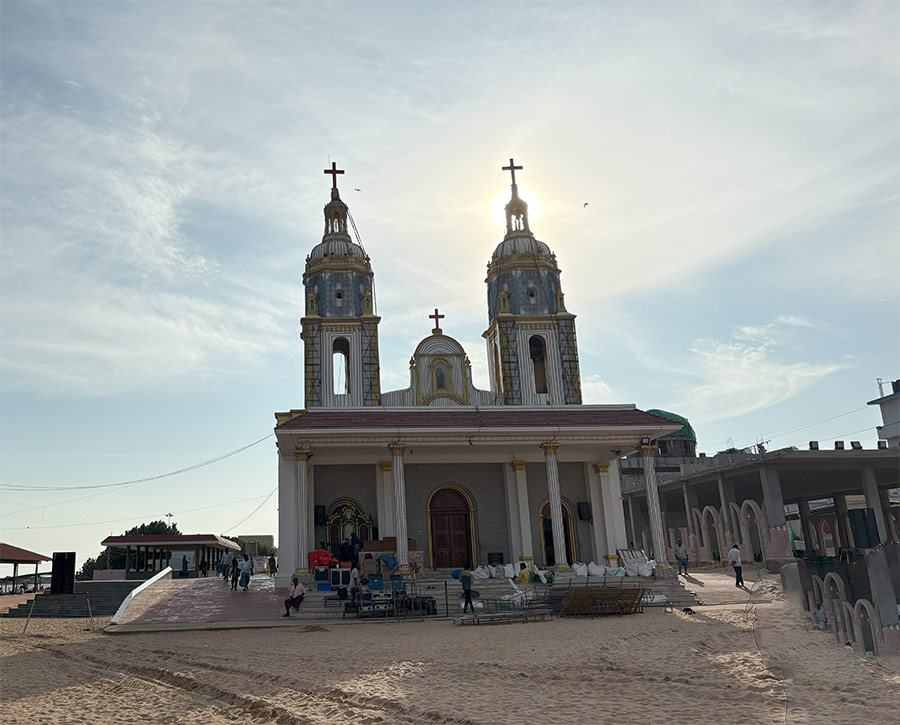
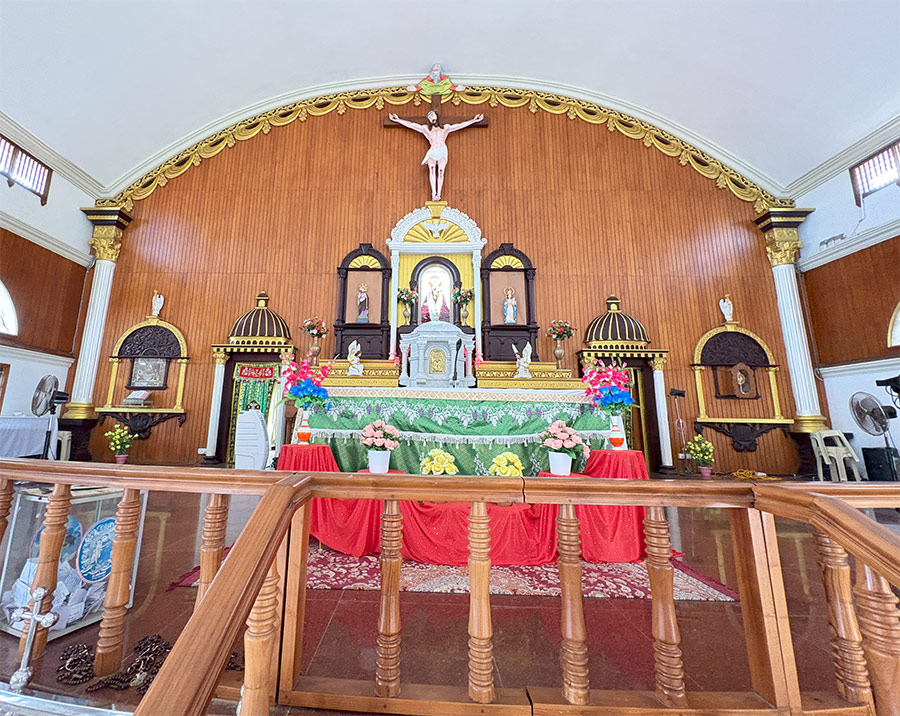
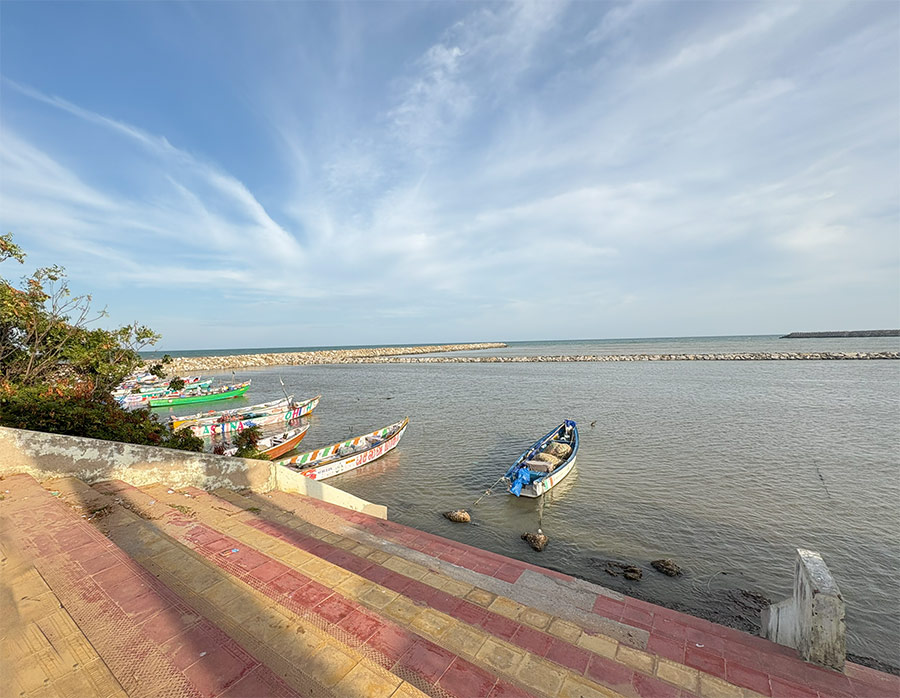
Local people narrate many such miracles by the Saint in this Uvari. Not long ago, a poor fisherman cooked a feast for the local community as a token of his gratitude for the favors he received from the Saint. But no one came forward to eat the offered food. In frustration, he dug up the sand before the Shrine and arranged the coconut leaves (thenna matai) and kept the food and covered it with the leaves and buried it. After about 6 months, people began digging the sand to erect a flag post for the festivities. To every one's surprise, the vapor emanated from the freshly cooked food laid 6 months ago. The whole village took part in eating the food as prasadam. From driving out Evil spirits to curing of diseases, people come here in Faith. Today, St. Antony's Shrine in Uvari stands as a testament to enduring faith and the rich tapestry of local traditions, continuing to draw pilgrims seeking spiritual solace and miraculous interventions.
Over time, the initial hut evolved into a more permanent structure. In the 1940s, the villagers built a church to house the original statue of St. Antony holding the Infant Jesus. This statue remains on the altar today. The church has since been upgraded to a shrine, attracting pilgrims from various parts of South India.
The shrine hosts two major annual feasts. The first occurs from June 1 to 13, drawing thousands of devotees. The second feast begins three Sundays before Ash Wednesday and lasts for 13 days, typically falling in the last week of January or the first week of February. During these celebrations, a blessed oil mixed with neem is distributed to devotees, who believe in its healing properties.
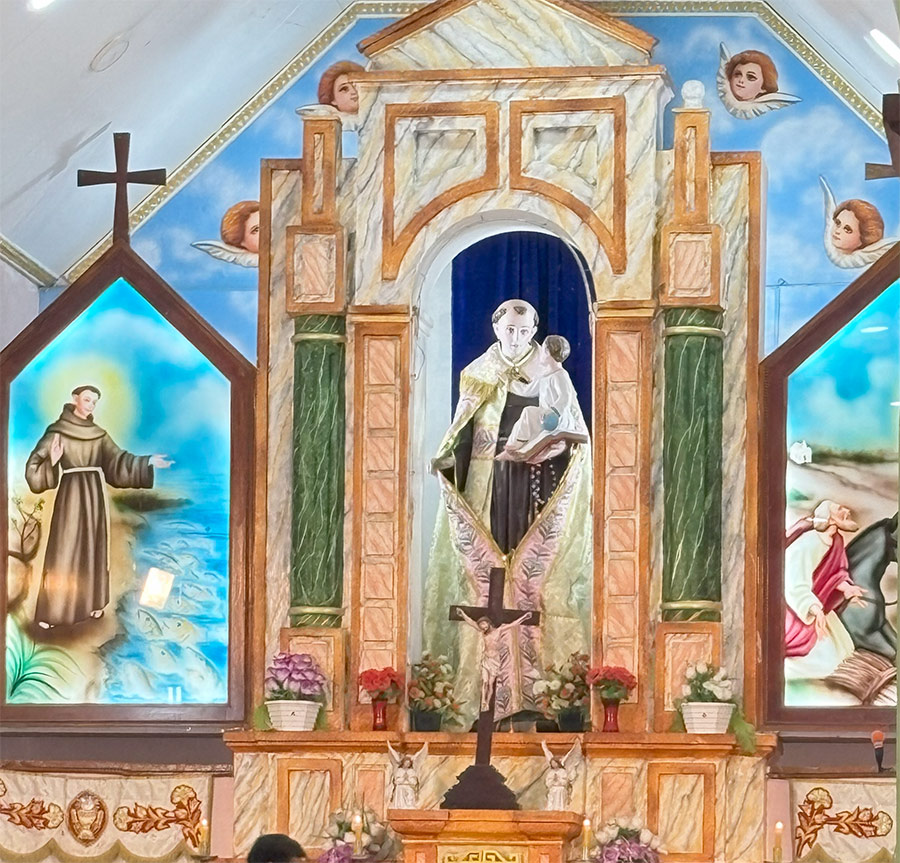
 South India Travel - Information on South India Travel
South India Travel - Information on South India Travel
 South India Tour - Grand Canyon of Asia
South India Tour - Grand Canyon of Asia
 Karnataka Tourism - Land of exquisite architecture in Temples and History
Karnataka Tourism - Land of exquisite architecture in Temples and History
 Pattadakal - Ceremonial site of the early Western Chalukyan kings
Pattadakal - Ceremonial site of the early Western Chalukyan kings
 Bandipur National Park - Paradise for wildlife.
Bandipur National Park - Paradise for wildlife.
 Bannerghatta National Park - Animals in their natural habitat.
Bannerghatta National Park - Animals in their natural habitat.
 Jog Falls - highest waterfalls in India
Jog Falls - highest waterfalls in India
 Qutb Shahi Tombs - Persian and Indian architectural style
Qutb Shahi Tombs - Persian and Indian architectural style
 Fort St Angelo Kannur - 500 year old European built Fort
Fort St Angelo Kannur - 500 year old European built Fort
 Bekal Fort - Old Fort near Kasargod
Bekal Fort - Old Fort near Kasargod
 Bhadra Wildlife Sanctuary - Jagaru Valley Wildlife Sanctuary
Bhadra Wildlife Sanctuary - Jagaru Valley Wildlife Sanctuary
 Sharavathi Wildlife Sanctuary - Sharavathi Valley
Sharavathi Wildlife Sanctuary - Sharavathi Valley
 Aralam Wildlife Sanctuary - Sanctuary near Kannur
Aralam Wildlife Sanctuary - Sanctuary near Kannur
 Coorg - The Scotland of the East
Coorg - The Scotland of the East
 Kudremukh - Face of a Horse overlooking the Arabian Sea
Kudremukh - Face of a Horse overlooking the Arabian Sea
 Santa Cruz Basilica Cochin - 500 year old Basilica near the Arabian sea
Santa Cruz Basilica Cochin - 500 year old Basilica near the Arabian sea
 Basilica of Our Lady of Dolours - Tallest Church in Asia and the biggest Church in India
Basilica of Our Lady of Dolours - Tallest Church in Asia and the biggest Church in India
 St. Andrews Basilica Allepey - Fair skinned Father of Miracles
St. Andrews Basilica Allepey - Fair skinned Father of Miracles
 Basilica of Our Lady of Vallarpadam - Basilica in an Island
Basilica of Our Lady of Vallarpadam - Basilica in an Island
 Velankanni Basilica - Lady of Health Shrine near the Bay of Bengal
Velankanni Basilica - Lady of Health Shrine near the Bay of Bengal
 Our Lady of Ports Cathedral Ernakulam - Cochin boasts of 4 Basilicas
Our Lady of Ports Cathedral Ernakulam - Cochin boasts of 4 Basilicas
 St. George Basilica Angamaly - Basilica for a Roman Soldier who slayed Dragons
St. George Basilica Angamaly - Basilica for a Roman Soldier who slayed Dragons
 St. Mary Queen of Peace Basilica Trivandrum - Syrian Malankara Church
St. Mary Queen of Peace Basilica Trivandrum - Syrian Malankara Church
 Holy Redeemer Basilica Trichi - Mother of Perpetual Help
Holy Redeemer Basilica Trichi - Mother of Perpetual Help
 Poondi Madha Basilica - Lady of Lourdes
Poondi Madha Basilica - Lady of Lourdes
 St. Mary's Basilica Bangalore - Miraculous statue of Our Lady
St. Mary's Basilica Bangalore - Miraculous statue of Our Lady
 Basilica of Our Lady of Snows Tuticorin - Miraculous Statue of our Lady of Snow
Basilica of Our Lady of Snows Tuticorin - Miraculous Statue of our Lady of Snow
 Basilica of the Sacred Heart of Jesus - Eglise De Sacre Coeur
Basilica of the Sacred Heart of Jesus - Eglise De Sacre Coeur
 Santhome Basilica - Houses the relic of St.Thomas
Santhome Basilica - Houses the relic of St.Thomas
 Basilica of Our Lady of the Assumption - St.Mary's Church
Basilica of Our Lady of the Assumption - St.Mary's Church
 Divine Retreat Center Chalakudy - Potta Ashram
Divine Retreat Center Chalakudy - Potta Ashram
 Church of Our Lady of Angels - 400 year old Church
Church of Our Lady of Angels - 400 year old Church
 Basilica of Our Lady of Snows Pallippuram - 500 year old Basilica
Basilica of Our Lady of Snows Pallippuram - 500 year old Basilica
 St.Lawrence Basilica in Attur - Miracles in Attur
St.Lawrence Basilica in Attur - Miracles in Attur
 Maria Bambina Church - Marian Devotion
Maria Bambina Church - Marian Devotion
 Holy Rosary Basilica Karumathampatty - New Basilica near Coimbatore
Holy Rosary Basilica Karumathampatty - New Basilica near Coimbatore
 Basilica of Our Lady of Health in Harihar - Velankanni of Karnataka
Basilica of Our Lady of Health in Harihar - Velankanni of Karnataka
 Basilica of St. Anthony - Basilica of St.Anthony of Padua
Basilica of St. Anthony - Basilica of St.Anthony of Padua
 Lady of Mount Carmel Shrine - Kovalam Shrine
Lady of Mount Carmel Shrine - Kovalam Shrine
 Divine Mercy Church - Divine Mercy
Divine Mercy Church - Divine Mercy
 Villianur Shrine - Villianur Lady of Lourdes
Villianur Shrine - Villianur Lady of Lourdes
 Manapad Churches - Churches in ManaPad
Manapad Churches - Churches in ManaPad
 Infant Jesus Shrine - Roman Catholic Shrine in India
Infant Jesus Shrine - Roman Catholic Shrine in India
 Chikmagalur Trekking - Heady mix of Coffee and Waterfalls
Chikmagalur Trekking - Heady mix of Coffee and Waterfalls
 Kodachadri Hills - Mountain Peak in Shimoga
Kodachadri Hills - Mountain Peak in Shimoga
 Kabini Resort - Forest retreat a few hours from Bangalore and Mysore.
Kabini Resort - Forest retreat a few hours from Bangalore and Mysore.
 Kemmanagundi - Undulating meadows, gurgling brooks, rolling mist
Kemmanagundi - Undulating meadows, gurgling brooks, rolling mist
 Hampi - Evokes visions of poetry in stone
Hampi - Evokes visions of poetry in stone
 Mangalore - A triangular city with a summit to the South.
Mangalore - A triangular city with a summit to the South.
 Mysore Palace - City basking in the glory of past Kings
Mysore Palace - City basking in the glory of past Kings
 Hyderabad Travel - City of Nizams
Hyderabad Travel - City of Nizams
 Vishakapatnam - Serene lakes, Cool beaches
Vishakapatnam - Serene lakes, Cool beaches
 Golconda Fort - Military Architecture
Golconda Fort - Military Architecture
 Charminar - Qutb Shahi Dynasty
Charminar - Qutb Shahi Dynasty
 Kodaikanal - South India's better known hill stations
Kodaikanal - South India's better known hill stations
 Kerala Tourism - God's own Country
Kerala Tourism - God's own Country
 Alappuzha - Palm fringed canals, lazy lagoons and water locked towns.
Alappuzha - Palm fringed canals, lazy lagoons and water locked towns.
 Kumarakom Backwaters - Idllyic relaxed backwater setting
Kumarakom Backwaters - Idllyic relaxed backwater setting
 Mattanchery Palace - Palace in Kochi
Mattanchery Palace - Palace in Kochi
 Munnar - Emerald green tea estates.
Munnar - Emerald green tea estates.
 Silent Valley - Sairandhrivanam, meaning forest in the valley.
Silent Valley - Sairandhrivanam, meaning forest in the valley.
 Wayanad wildlife sanctuary - Holiday Resorts, Ayurvedic Rejuvenation centers and more.
Wayanad wildlife sanctuary - Holiday Resorts, Ayurvedic Rejuvenation centers and more.
 Poovar Island - Holiday in Poovar
Poovar Island - Holiday in Poovar
 Brahmagiri Wildlife Sanctuary - Highest peak in Karnataka
Brahmagiri Wildlife Sanctuary - Highest peak in Karnataka
 Cochin Travel - Gateway to God's own Country
Cochin Travel - Gateway to God's own Country

 Belur Hoysala Temples - Poetry in Stone
Belur Hoysala Temples - Poetry in Stone
 Chola Temples - Revisit the past glory of the mighty Cholas
Chola Temples - Revisit the past glory of the mighty Cholas
 Madurai Meenakshi Temple - One of the Biggest temples
Madurai Meenakshi Temple - One of the Biggest temples
 Tirupati temple - Lord of the 7 Hills
Tirupati temple - Lord of the 7 Hills
 Rameshwaram Temple - Sethu Yathra
Rameshwaram Temple - Sethu Yathra
 Swamimalai Temple - The Son who taught his Father
Swamimalai Temple - The Son who taught his Father
 Guruvayur Temple - Bhuloka Vaikunta
Guruvayur Temple - Bhuloka Vaikunta
 Sabarimala Temple - Makara Jyothi
Sabarimala Temple - Makara Jyothi
 Padmanabha swamy Temple - Ananthasayanam
Padmanabha swamy Temple - Ananthasayanam
 Thiruvannamalai temple - Padal PetraSthalam
Thiruvannamalai temple - Padal PetraSthalam
 Saradamba Temple Sringeri - Sringeri Temples
Saradamba Temple Sringeri - Sringeri Temples
 Ranganatha Swami Temple - Largest Temple in the World
Ranganatha Swami Temple - Largest Temple in the World
 Udupi Krishna Temple - Kanakanakindi
Udupi Krishna Temple - Kanakanakindi
 Vaitheeswaran Koil - Prime center for naadi shastra
Vaitheeswaran Koil - Prime center for naadi shastra
 Sripuram Golden Temple - Temple of Gold
Sripuram Golden Temple - Temple of Gold
 Srikalahasti Temple - Kailas of the South
Srikalahasti Temple - Kailas of the South
 Kanchipuram Temple - Ancient Pallava built Temple
Kanchipuram Temple - Ancient Pallava built Temple
 Palani Temple - Temple dedicated to Tamil God
Palani Temple - Temple dedicated to Tamil God
 Thiruchendur Murugan Temple - Part of the 6 Abodes of Murugan
Thiruchendur Murugan Temple - Part of the 6 Abodes of Murugan

